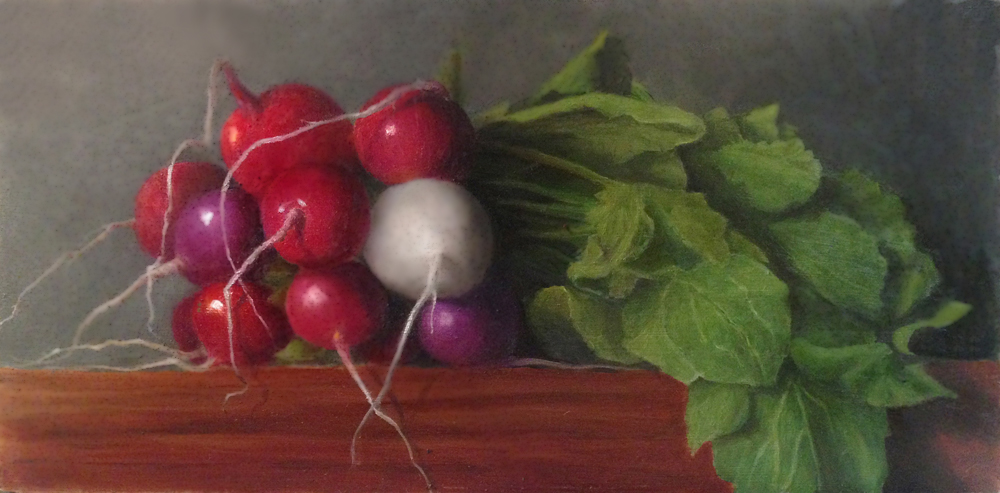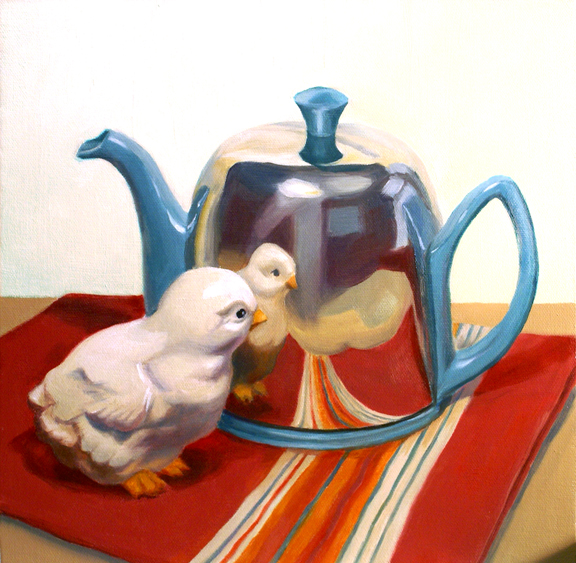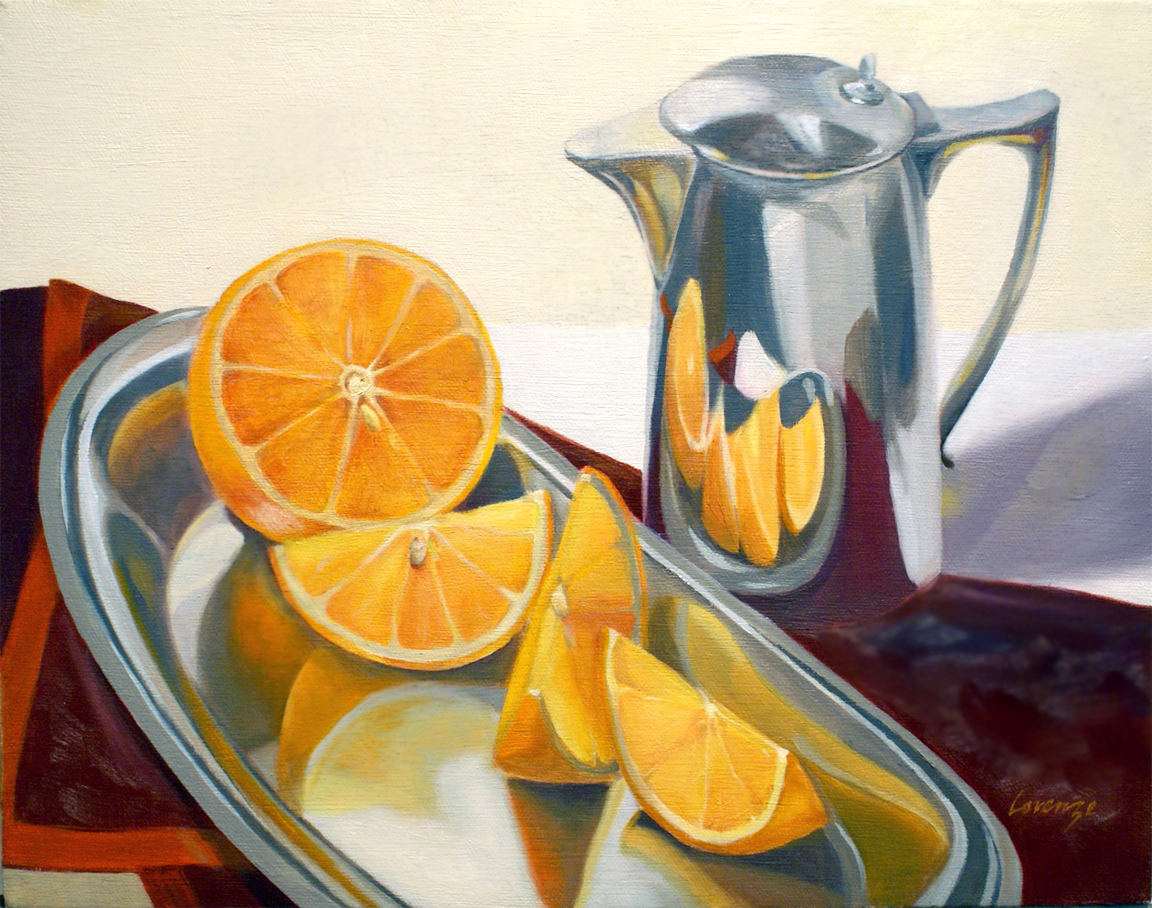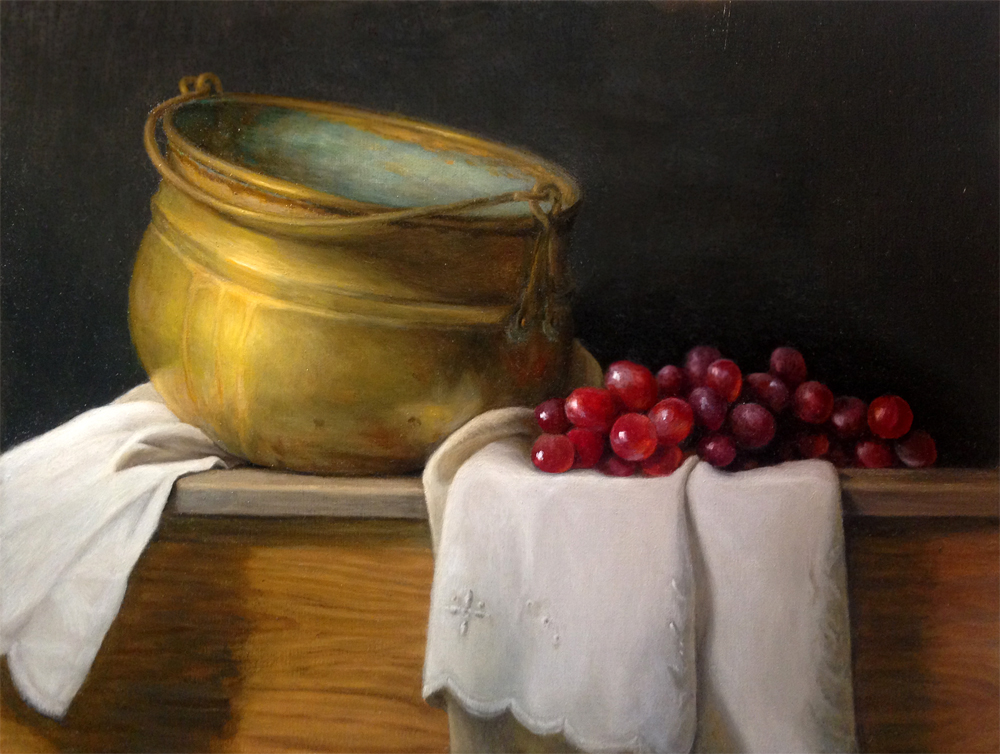
Full Moon Radish photo via Dorothy Lorenze
So, why paint still life? Here are 10 reasons:
1. To begin with, convenience is a factor. A still life can be set up just about anywhere, using pretty much any objects! With the exception of food and flowers that wilt, your subject patiently waits and you can paint whenever it suits you. 2. Subjects are readily available: food, books, tools and more. You can choose objects for a composition that reflects your mood or vision, from subtle and serene to bold and energizing. Or quirky and humorous!
How YOU Doin’? photo via Dorothy Lorenze
3. Still life provides unparalleled learning opportunities for a painters. Working with actual objects allows you to observe subjects closely to see exactly how forms connect or how they vary. Depth perception is important in realistic rendering and it’s easier to observe from 3-D objects than a photo.
4. Observing the distortion of a surface pattern as it rounds an object like a teacup or fabric fold is a lesson in perspective as well as the effect of light and shadow on a form. Different every time, while following the same rules!
Three paintings showing how pattern appears on a form via Dorothy Lorenze
5. Learning to mix colors of every hue, value and intensity is not only possible, but it’s inevitable as subjects are so varied.
6. By choosing a variety of objects, texture, translucency and luminosity can be studied and rendered. Man-made materials like sheer fabric, colored glass and metal provide challenges that differ from organic forms like flowers, fruit and wood. 7. Even when painting realistically, abstracted forms occur in reflective surfaces like metal or glass. They are some of my favorite details, adding interest and contrasting with the “real” thing!
Orange Reflections photo via Dorothy Lorenze
8. You are the master of your composition and can determine where the viewer will focus and how their eye will move around the painting. And you choose to focus on the things you love whether it’s luscious fruit or nostalgic heirlooms.
9. Still life allows more time for observation than any other genre. The more you look, the more you see. The subtle details that give character to objects comes into focus. And, as we know, the devil is in the details!
Almost Wine photo via Dorothy Lorenze
10. Still life is “simply” an arrangement of ordinary inanimate objects, natural or man-made, with a stable light source. It’s also a genre where the subjects, highlights and shadows all stay put and are controlled by the artist. Oh, the possibilities!

Share tips, start a discussion or ask one of our experts or other students a question.
No Responses to “10 Reasons to Paint Still Life”